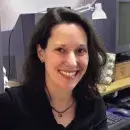
Brenda A. Schulman
Dr. Brenda Schulman is a Member of the St. Jude Children’s Research Hospital Faculty in both the Structural Biology Department and the Tumor Cell Biology Department; Co-Director of the St. Jude’s Cancer Genetics, Biochemistry, and Cell Biology Program; and an Investigator at the Howard Hughes Medical Institute. She is known for her research studying the mechanisms underlying protein modification by ubiquitin-like protein (UBL) conjugation involving E1-E2-E3 enzyme cascades. Schulman’s research centers around the question: How can cells respond quickly to changing demands and environmental influences? Some of the most rapid changes are mediated by post-translational modifications of existing cellular proteins, often through the action of UBLs which act as accessories to reassign, redeploy, or break down other proteins. Defects in UBL-mediated pathways have been associated with diseases including cancer, neurodegenerative disorders, and viral infections. Using innovative techniques in structural biology, biochemistry, cellular biology, and genetics, the Schulman lab conducts research around three central goals: (1) understanding the basic enzymatic mechanisms underlying UBL attachment to targets, (2) understanding how UBLs are attached selectively, and (3) understanding mechanisms by which UBL covalent attachment can change enzyme and target function.
Over her career, Dr. Schulman has contributed to discovery of structural mechanisms underlying UBL activation by E1 enzymes as well as mechanisms by which UBLs are transferred between E1 and E2 enzymes, and between E2 enzymes and E3s in the Hect family. Schulman showed that a fundamental feature of UBL transfer is that an enzyme-linked donor ubiquitin (or UBL) interacts with the recipient enzyme to drive consecutive steps in UBL transfer cascades. She has demonstrated the structural bases for assembly and regulation of the largest class of E3s, the cullin-ring ligases (CRLs). Schulman established a paradigm that not only accounts for the activities of the approximately 300 CRLs, but that also may be relevant for the 600 ring E3s predicted to be encoded by the human genome. Insights have also implied that a general role of UBL ligation may be to reshape multiprotein assemblies in order to modulate function. Her lab recently discovered a dual E3 mechanism, by which two E3s synergistically promote UBL ligation. In so doing, they discovered how one of the most prevalent eukaryotic protein modifications, N-terminal acetylation, can mediate protein interactions via burial of acetylated protein N-termini into hydrophobic environments.
Dr. Schulman built her career at a series of premier institutions, obtaining her BA from Johns Hopkins University in 1989, her PhD from the Whitehead Institute/Massachusetts Institute of Technology in 1996, and conducting two postdoctoral fellowships – one at the Massachusetts General Hospital Cancer Center/Harvard Medical School from 1996-1998 and the other at Memorial Sloan-Kettering Cancer Center from 1998-2001. She has been recognized with 2014 Membership in the National Academy of Sciences, 2011 Dorothy Crowfoot Hodgkin Award from The Protein Society, 2004 Presidential Early Career Award for Scientists and Engineers, 2004 Beckman Young Investigator Award, and 2002 Pew Scholar in Biomedical Sciences Award. Dr. Schulman’s articles appear in Molecular Cell, Science, Nature Structural Biology, and Cell.